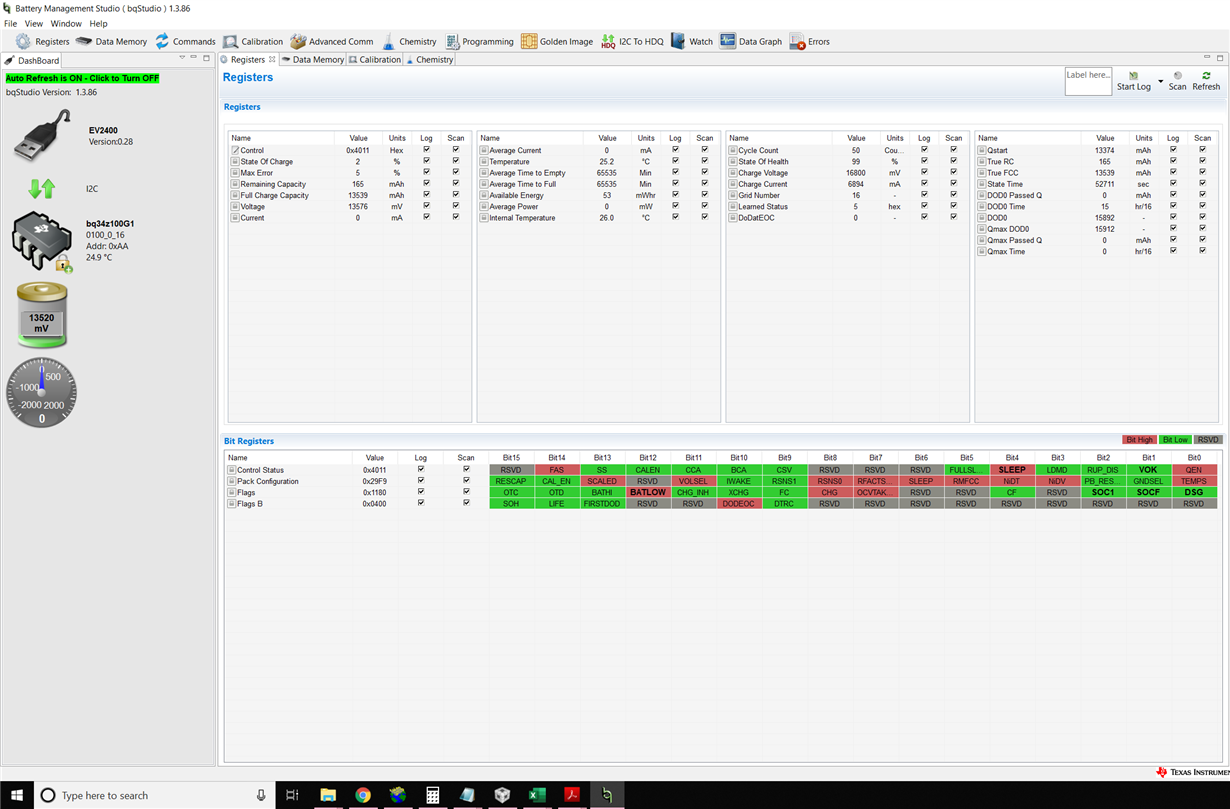Other Parts Discussed in Thread: BQ34Z100
Hi,
I have a system whereby it is not possible to charge the Lion batteries in situ. They must be charged separately from the system in which they are used.
I.e. when I perform the initial learning cycle in order to optimise the IT parameters, in order to create a Golden Image, I cannot connect the battery pack during the charging phase. I can only switch a fully discharged and relaxed battery with a fully charged one (I can maintain power during the switchover). When I do this, the system never moves from a learned status of 4. The FC flag remains at 0. It seems that the system has not recognised that the battery has moved from a discharge state to a charged state at all. In fact, when I then discharge the battery followed by relaxation, the system remains in learned status 4. The battery has been Chemistry ID'd, with the correct ID and battery parameters loaded into the system.
Observed status was:
Discharged battery, fully relaxed: RUP_DIS 0 VOK 0 OCVTAK 1
Switch to fully charged battery : RUP_DIS 0 VOK 0 OCVTAK 1 (i.e. unchanged)
Discharge cycle : RUP_DIS 0 VOK 1 OCVTAK 1
Discharged battery, fully relaxed: RUP_DIS 0 VOK 0 OCVTAK 1
It seems from the various guides that this is an integral part of optimising the system (indeed, without performing this first learning cycle the system is unusable).
My question, therefore, is to ask whether it is possible to optimise a system without performing the charging cycle in situ? It is similar, I would imagine, to asking how one can optimise the system for a primary battery which has no charging cycle at all, which is, in fact, another task I must accomplish. The documentation does not appear to offer any guidance on how to do this with the BQ34Z100 - G1 device.
All help gratefully received.
Julian


